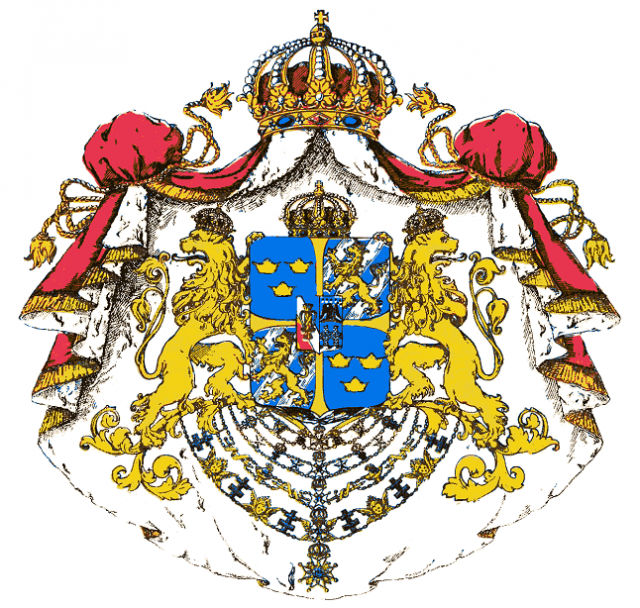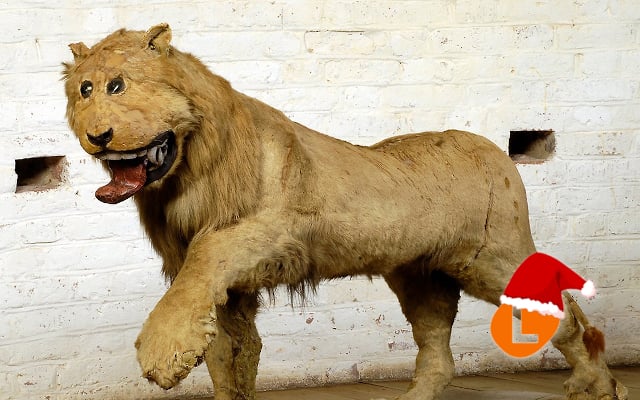If you ever find yourself in the Swedish town of Mariefred, consider paying a visit to Gripsholms Slott. The castle is an impressive building itself, and is also home to the National Portrait Gallery.
But one of the most startling pieces of art on display is a stuffed lion that manages to bear very little resemblance to the real thing.
It looks like this:
The centuries-old lion has been given a new lease of life thanks to social media, with many visitors finding its face more comical than awe-inspiring.
If you look at the lion from the side, it's actually not too dissimilar from depictions in various Swedish coats of arms. So probably the taxidermist was aiming for a resemblance to these lions, rather than to recreate how the lion looked when it was alive, and imagined that it would only be viewed from the side.

Image: Illustration c. 1900, Rikskalendern, Kungl. Boktryckeriet. P. A. Norstedt & Söner : Stockholm 1908.
So how did a lion find its way to Sweden, and why did it end up looking like that?
The story goes that it was one of several exotic animals brought to Sweden during the 1700s as a gift to the king at the time.
They then lived in the royal park Djurgården, where it was a slave's job to care for them. That's what an explanation at the castle itself says, and has been repeated by media through the years.
But according to historian Dick Harrison, who wrote the book 101 föremål ur Sveriges historia (101 objects from Sweden's history), this is a myth.
Lions were received as a gift and kept on Djurgården, but the specimen found in Gripsholm isn't one of them. In fact, the lions that were given to the king were re-gifted to the prince of Saxony in 1732, Harrison states.
And so the Gripsholm lion, fondly referred to as Leo, remains a Swedish mystery. A mystery who, in the words of the Royal Palace, “evokes everything from wide-eyed wonder to happy laughter”.


 Please whitelist us to continue reading.
Please whitelist us to continue reading.
Member comments